July 11 – Day 3 - Helen Falls Hike
Strong winds rattle the tent. Three AM. I listen, waiting. The metal zipper pulls dance, ching against metal teeth. After a while, despite the nylon flapping, the metallic ping, I fall back asleep.
In the morning, another leisurely start. We savour the luxury of doodling. Lunch in hand, we depart upstream to look at Helen Falls.
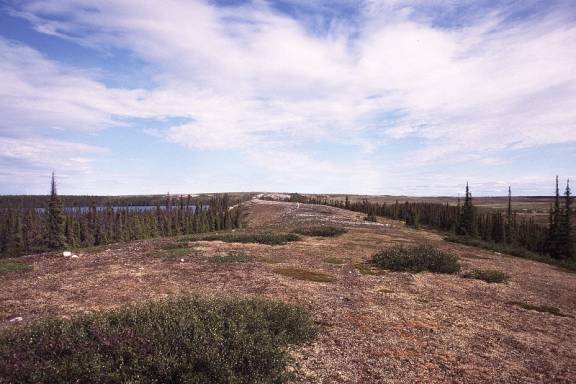
Instead of following the river, we to cut inland, again making use of those eskers. Its 30 minutes of steady uphill before the land levels to a broad terrace. There, I take a breather and soak up 360 degree view. Broad patches of wet indicate recent snow melt. Dead spruce trees with 24” diameters, lie in decay, fall among small living groves. How uncommon to see a mature tree fallen down from age and not ‘harvested’ in its prime.
A small series of 5 or 6 ponds provide the water for this mini forest. We investigate the area, flushing out a small hawk like bird which flying low, escapes identification before the binoculars can be hauled out.
Annoyingly, just at the start of the hike, I manage to get a wet foot. Clinging to some small bushes while crossing a creek, I slip. For the next few hours, I schlump around with wet sock and soggy runner – getting a blister on a canoe trip with no portages!
Soon enough, the discomfort is forgotten. Each and every tiny body of inland water has either a duck or grebe pair, nesting or brooding some hatchlings. Lakes offer a more protective nursery environment compared to the hostile river current and predatory fish. Beside the lake, Labrador tea is in flower as well as pink bog rosemary. Spring on the tundra! ripe with results of reproductive activity.
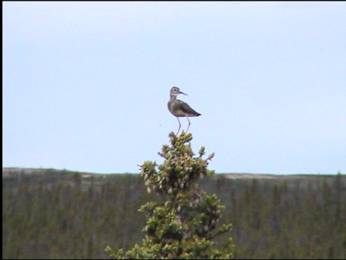
A grey cobble stone esker threads between lake and forest giving views of both. Pairs of yellow lesser legs (name of a wading bird, honestly) perch on spruce tops, calling out to each other. Finally, in the distance, a great bend in the river appears. We head in towards it, under estimating the distance. Descending down from the esker, a sandy bowl filled with caribou bones, bone fragments, teeth, antlers, and tracks of wolf, caribou, muskox and their pellets tell a story I can only guess at.
Finally, we come out to the river. The steep red banks are sharp and not inviting to descend. I’m glad we started our trip at the gentle junction and welcoming campsite instead of this sharp and forlorn country. Looking down, fractured layers of pale sedimentary rock jut out like broken teeth cutting the rivers smooth flank.
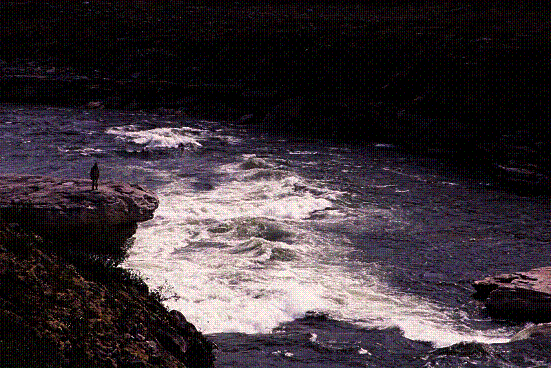
Looking upstream to Helen Falls, a portage trail and a stone cairn mark the end point of the river white water. The portage trail appears well trodden, scored deep into the tundra. Inside the cairn, we find a metal box with paper and pen. I sign in our group. We are the second group here this summer. Five days ahead of us is none other than the author of the Thelon Sanctuary book, David Pelly, canoeing with family and friends. I wonder if we will run into each other. Browsing through the journal entries, I recognize the names of friends and other arctic river veterans.
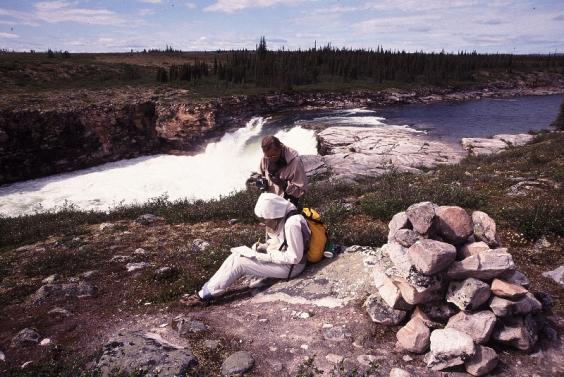
We spend three enjoyable hours, lazying, lunching and poking around. The water level seems to be low compared to the photos in Pelly’s book. Its easy walk right out to the white sandstone ledge and hang over pounding waterfall. It’s 12 km walk here and 10 km back (short cut). We turn to go, pulled by the lure of wine and pushed by the distant rumble of thunder.
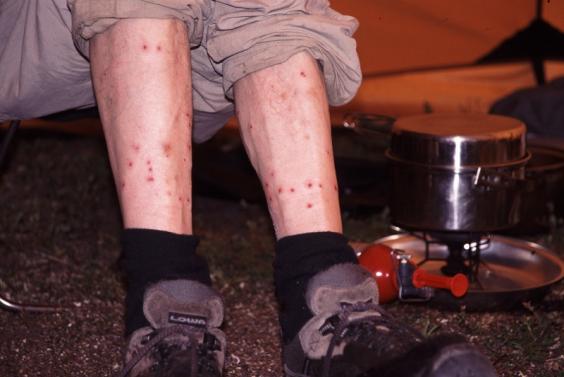
Alfred’s black fly bitten legs, discovered after Helen Falls walk. Lesson learned: tuck pants into sock cuffs.